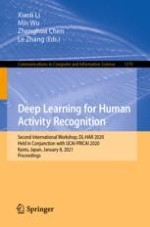2021 | Book
Deep Learning for Human Activity Recognition
Second International Workshop, DL-HAR 2020, Held in Conjunction with IJCAI-PRICAI 2020, Kyoto, Japan, January 8, 2021, Proceedings
Editors: Dr. Xiaoli Li, Min Wu, Zhenghua Chen, Le Zhang
Publisher: Springer Singapore
Book Series : Communications in Computer and Information Science
